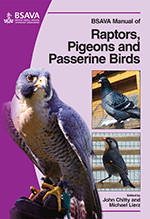
Full text loading...

Passerine birds range in size from a few grams to over 1.5kg. They inhabit a wide range of habitats and have a variety of diets. Their life histories and reproductive behaviour are often unique. This chapter discusses sexing passerine birds; breeding and management of hardbills; breeding and management of softbills; colour mutations; mules and hybrids; and show training.
Passerine bird husbandry and show management, Page 1 of 1
< Previous page | Next page > /docserver/preview/fulltext/10.22233/9781910443101/9781910443101.4-1.gif

Full text loading...




